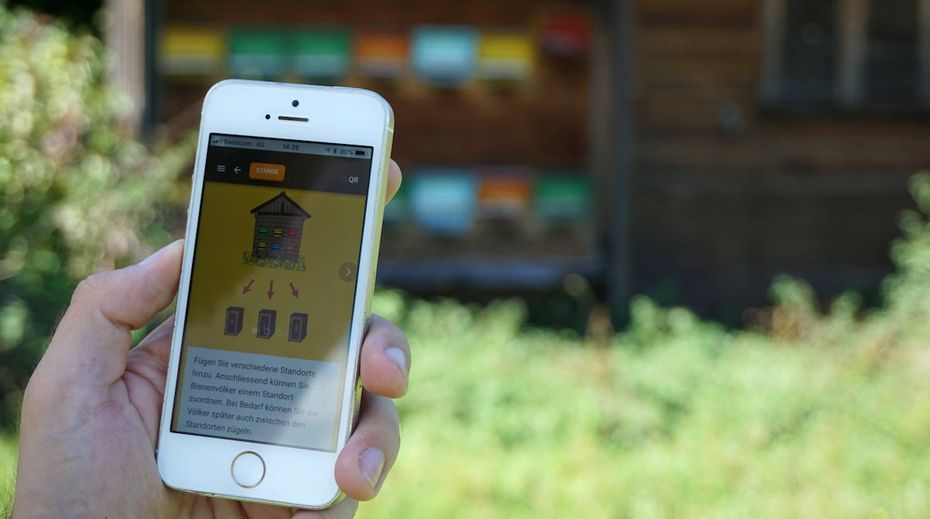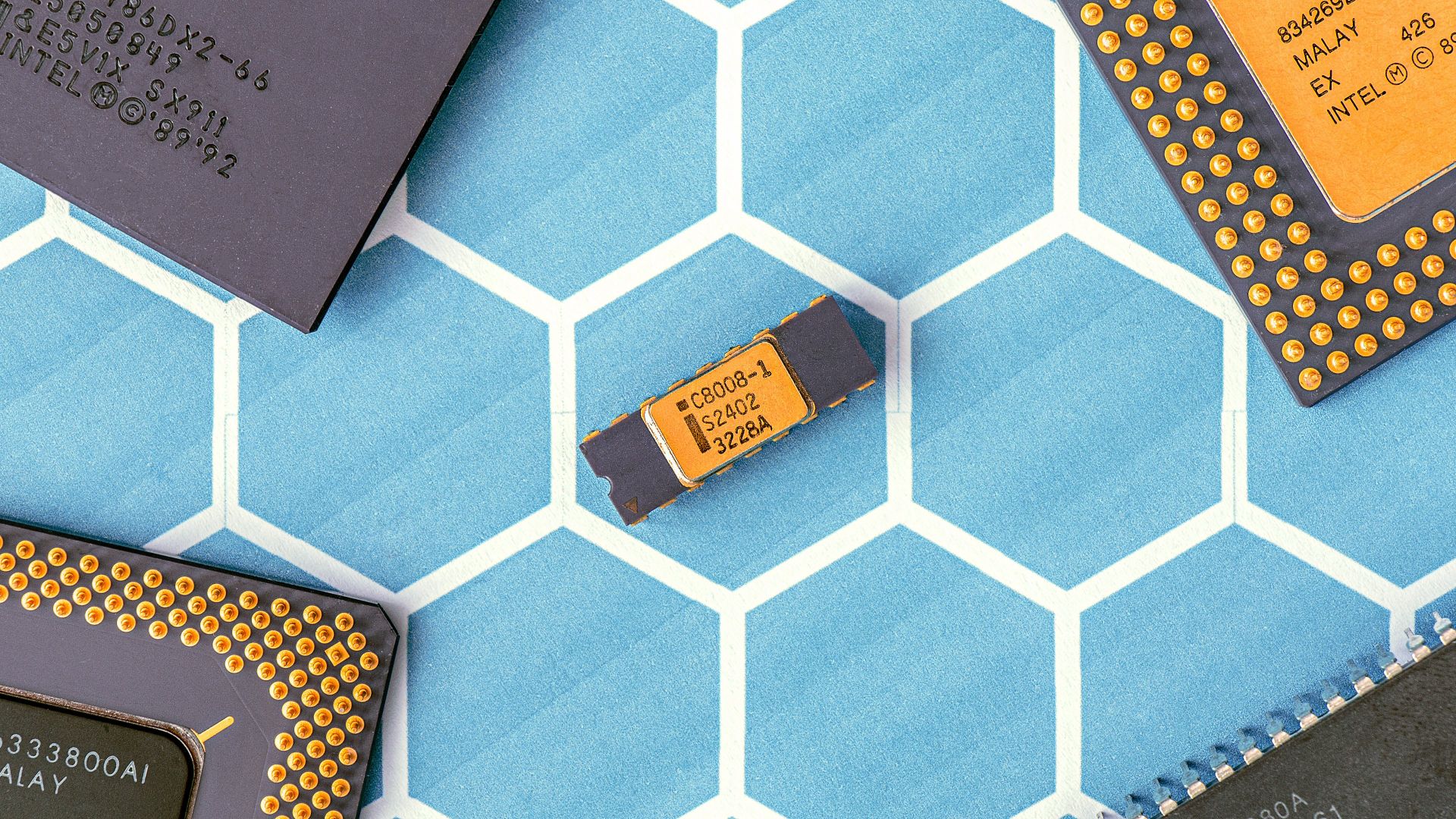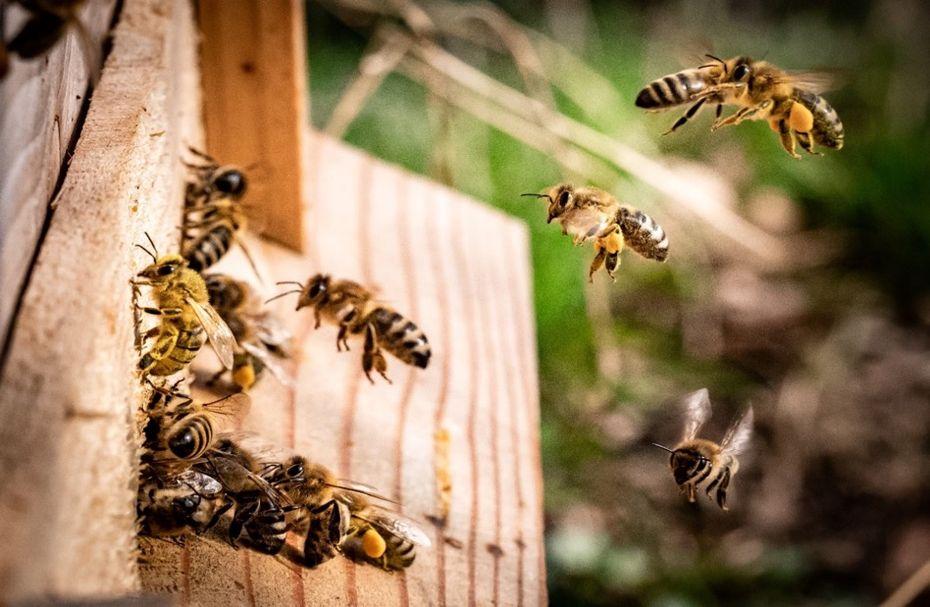Apiculture is a deep-rooted practice that has existed for thousands of years. As with many areas of our lives, it is getting influenced and transformed by continuous advancements in technology. Even though the principle of beekeeping is very natural, becoming more effective, more productive, or simply having more fun with it, is very welcome.
An increased number of gadgets and tools are here to help the beekeeper and improve the health of the bees. Because here’s the challenge: bees are influenced by changes in the environment and even well-meaning alterations can be harmful. Non-invasive technologies that exist in perfect harmony with nature are a win for beekeepers and bees alike.
let us take a look at what technology can do for apiculture. You might just get an idea for your own hives

1: Beehive management apps
Beekeepers love to work with their hands, right? This is where innovation in mobile technology can come in very handy. Apps can make record keeping and monitoring much easier and can be taken into the field with the beekeeper. They can help record colony health, harvesting and treatment information, can provide temperature and weather updates, not mention, they can eliminate paperwork. Fast, easy work makes for happy bees.
There are several apps out there and most are very user friendly, offering features for both hobbyists and commercial beekeepers. However, there are things to consider when choosing the right app for you. Such as:
offline usage – you might not have cellular or wi-fi coverage at your apiaries
possibility of recording colony strength, queen status and honey harvests
reminders and inspection notes
weather forecasts
usability, such as size and layout of buttons- Must be simple to use amongst your hives
possibility to compare data from multiple sensors and download reports
Relevant for commercial beekeepers
number of hives and locations to manage
PDF reports and cloud storage, to help you get rid of bulky folders stuffed with paper
visual reporting and comparisons via graphs
Relevant for hobbyists
possibility of sharing data with others for advice or consultations (e.g. via exports or social media)
photo features to see how the hives develop over the months
With such a vast variety of mobile apps available on the market, it can be a challenge finding the perfect one for you. Remember that the app should be easy to use and should make your life easier. Many of them are free, while some with premium features charge a subscription fee.
2: Weight monitoring
This is probably one of the easiest technologies for the tech-curious beekeeper to integrate. The weight scale provides important information about feeding and starvation danger, and how intense the nectar flow is. Weight scales can also help in detecting swarming activities and in estimating the number of foragers present. While some weight scale systems are composed of the physical scale and a digital dashboard, many work together with other devices such as temperature sensors and sound detection, to provide more complete data analysis. It is important to keep in mind that a weight scale system should not only show changes in hive weight, but also provide insights into the changes. A few questions to ask yourself before making your weight scale purchase:
Does it require batteries, or is it connected to a power supply?
How many scales can be connected to the same switch?
How much weight can it measure?
How are notifications sent to the user?
Location reception- Does it require a SIM card/no SIM card?
Strength and installation- What type of material is it made from, and how large is it?
3: Temperature and humidity monitoring
Along with hive weight, temperature and humidity can provide early warnings to any problem you may have and can enable you to respond appropriately. Temperature and humidity sensors are also great indicators of hive health, queen activity and the state of brood. Most of these systems are connected to an app, which sends alerts about any changes, and will provide detailed information about the timing of each change. Having these characteristics under control will enable the bees to communicate in a healthy way and can inform you when honey is ready or when a potential fungal infestation is present.

4: Anti-theft solutions
The reduction of the bee population has pushed beekeepers to be more careful about their hives. To add to the many challenges facing beekeepers such as varroa infestation, pesticide use and climate changes, hive theft is a growing concern. Potential theft of one colony could mean the loss of two seasons of beekeeping revenue.
Several hive tracking devices are available that use GPS to provide accurate hive location tracking, and alert the beekeeper when hives are moved. Moreover, recent successes in recovering stolen hives has inspired developers to create a satellite view which is extremely helpful for law enforcement.
A lot of devices are visible when placed in the hives, which makes them easy for thieves to remove. GPS- based solutions that are embedded within the hive, or directly in the frames are therefore more discrete and better options. Some other important features to consider about anti-theft tech:
the device should work independently and remotely, with an internal power supply
the device should stay on stand-by until any disturbance, so as not to affect the bees with radiation
it should have full GPS, 2G, 3G and 4G network coverage
it should ideally be able to conserve battery power over several months
The cost of such tech is not negligent. Devices can easily cost up to 250 euros, however there are companies providing subscription-based products which cost less. Since thieves will often steal more than one hive at a location, purchasing one anti-theft solution for multiple hives could do the job.
5: Sound analysis
Did you know that bees flap their wings at different frequencies and change their acoustic behavior based on the stressors they are exposed to? A sound detection and analysis device can provide some of the most interesting insights for a beekeeper. It can enable us to check the status of the queen, identify unhealthy hives, swarming activity, pest infestation, or Colony Collapse Disorder.
Common to all systems is the sound detector. A sound detector will capture frequencies which the human ear cannot distinguish. It will typically look at:
Fanning noise
Hive activity noise
Internal and external vibration (will help preventing swarming, days in advance)
These devices are generally non-invasive and are often connected to a digital environment. This allows you to receive acoustic analysis of the hive and state of the colony in close to real-time.
6: Flight activity

Here is where technology can really show its stamp. By installing cameras in front of, or on the top of the beehives, it is possible to see in real time what is happening. Recent advances in flight detection combine the use of cameras, computers, and well-developed algorithms to analyze hours of footage and provide detailed reports of significant events. Going one step further, there is also the possibility of acquiring a flight detector system with integrated AI technology. The camera analyzes the hive entrance and provides motion and feature analysis, which gives the beekeeper information about:
Number of bees flying in/out/around the hive
Number of bees that do not return
Individual bee movement
Pollen carried by your bees
Difference sizes and types of bees
Potential invaders
Not too bad at all when thinking about how much one can get out of a single monitoring system. However, as it is still new technology, it is quite expensive, and the risks of theft are high. Another thing to consider is the placement of the hives, as the changing light throughout the day can affect the accuracy of the footage. Furthermore, as such systems are very power consuming, they normally cannot be run on solar energy sources.
7: Varroa solutions
Almost all beekeepers have come across the tiny yet destructive varroa mite. Technology is making huge advancements in this fight, to provide beekeepers with more effective and sustainable alternatives to the traditional chemical treatment.
Increased interest into the environment and welfare of the bees has led to innovative companies finding eco-friendly solutions to the problem of varroa. At temperatures around 42°C, varroa mites perish, whereas bees and brood are unharmed. There are different technologies available that apply this principle, allowing for chemical free varroa treatment (which also means chemical free honey).
Some things to consider when looking into heat treatment for bees are:
Treatment temperature should be approximately 42°C to be effective
Length of the cycle (2-3 hours per treatment shows highest effectiveness)
Repeat treatments (solution should offer continual treatment rather than one offs)
Fully automated
Power source: as heating uses energy, check whether solutions run on grid power, solar energy, or both
Placement of the heating element. For best results, the heating element should be placed within the brood area, as bees self-regulate hive temperature. External heating elements vary greatly in effectiveness due to the thermoregulation of the bees.
It seems like there are a lot of options to choose from when it comes to beekeeping technologies, and the future is full of exciting developments. AI, machine learning and data analytics are all being applied in new ways to provide even more accurate information and to make the lives of beekeepers easier. The right technology can add value and improve the everyday work by leading towards more bee-friendly treatments, better monitoring and a deeper understanding of the hives.
While technology may not be able to solve all the issues faced by beekeepers, it can unquestionably help. Tech should also be regarded as an investment: higher initial cost, that maximizes value over time. Regardless of which tool or combination of tools you choose to use, there are plenty out there to play around with, and many more to look forward to.